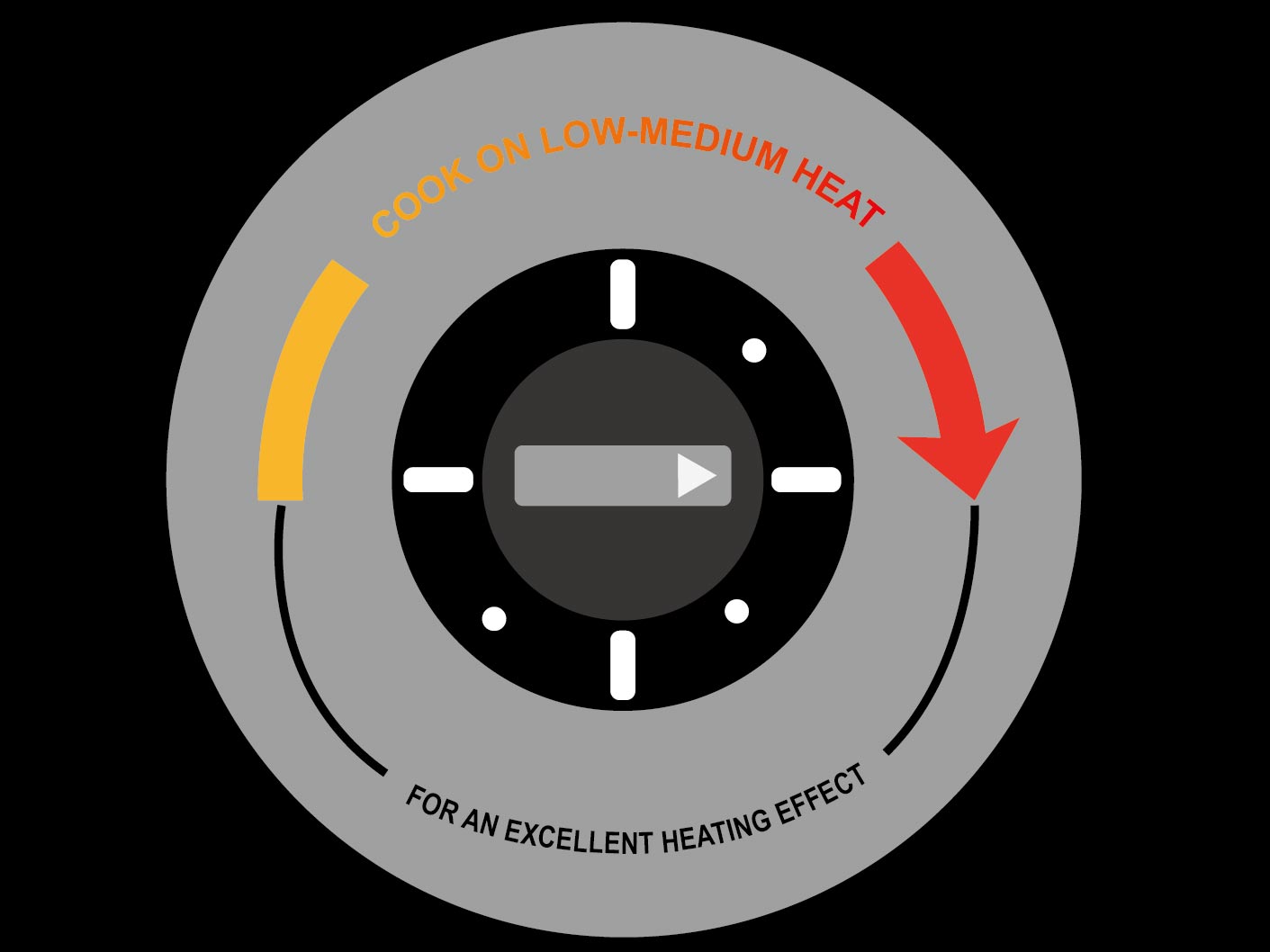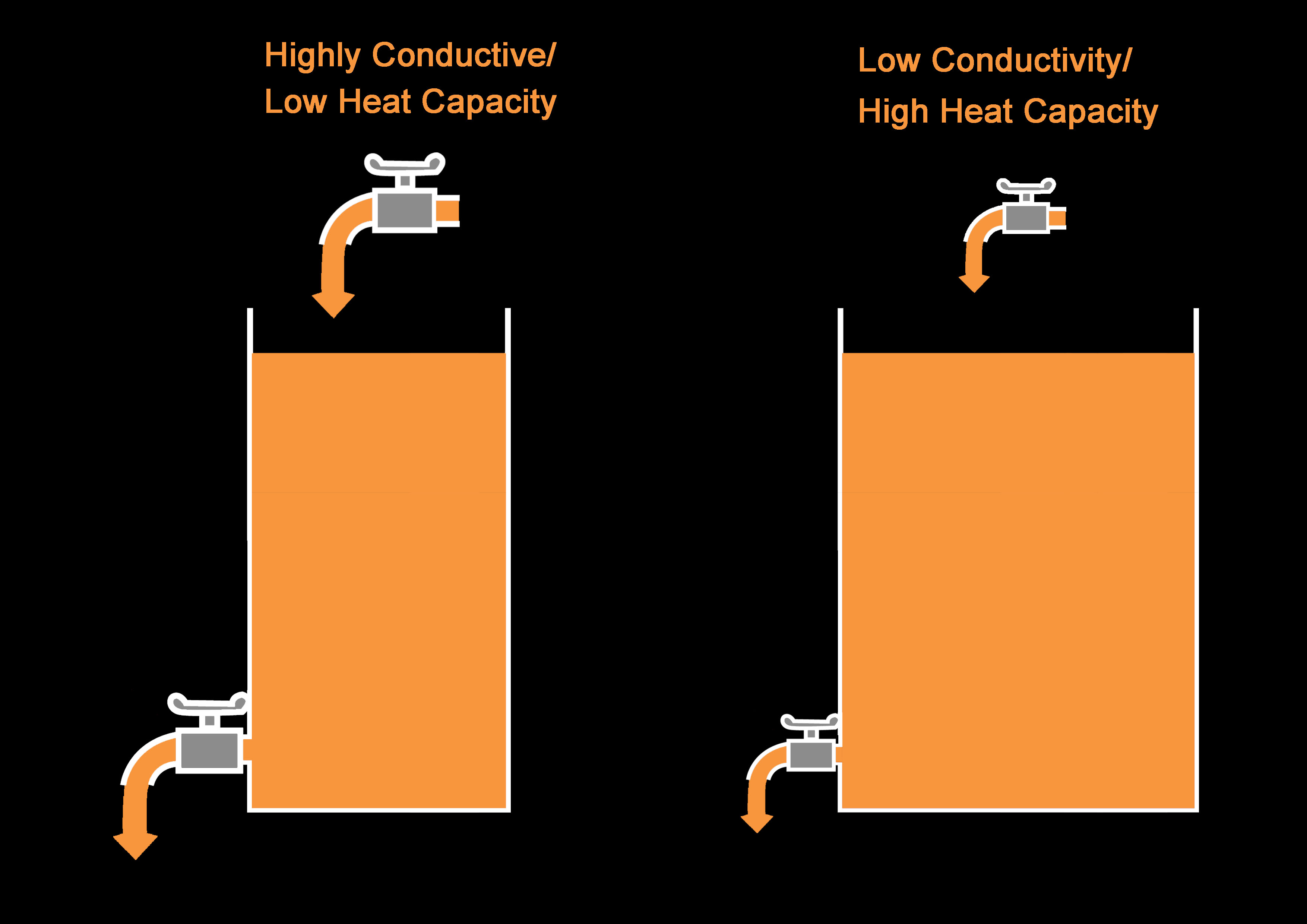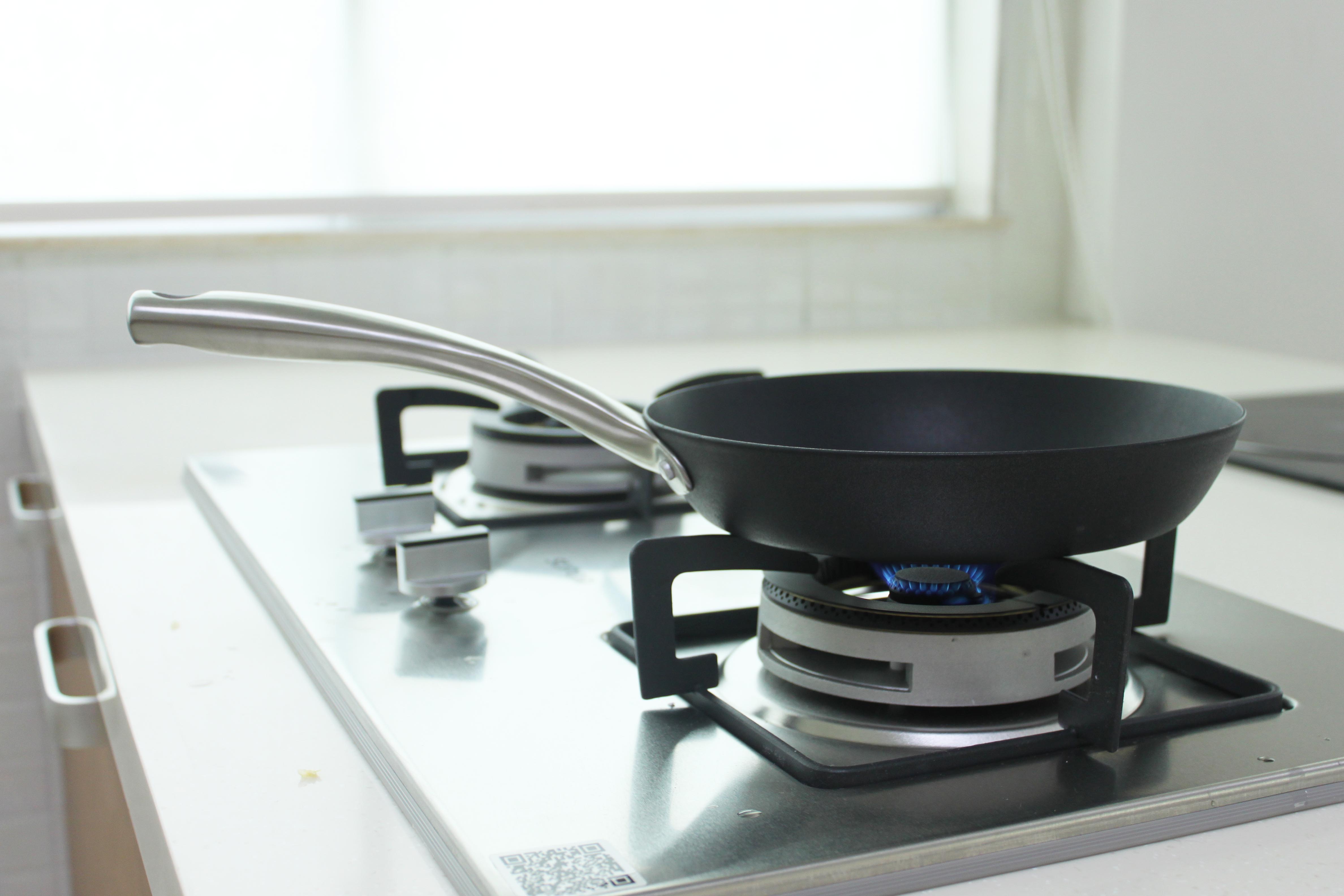As was mentioned in the previous post, Lotus Rock is a highly distinctive and innovative cookware utensil, unlike other types of cookware sold in the market today. It has many benefits for use with cooking, including:
- Excellent heating effect
- Metal utensil safe
- PTFE/PFOA free
- Natural, durable non-stick release
- Non-reactive surface
- Compatible for induction and all other cooking top surfaces
- High heat resistance
- Strong, durable construction
However, some of the benefits listed above require the ‘use and care‘ instructions for Lotus Rock to be followed – if not the pan will not perform to its optimum ability and performance. Without a doubt one of the most important instructions for using a Lotus Rock pan is to “Use a low-medium heat setting”.
Many pots and pans produced in the market today are made with aluminum. One of the advantages of aluminum for cookware is that it conducts heat very evenly; however it is not generally used for professional-style cooking because it has very poor heat retention. Its efficient heat conduction, along with its low density, means that aluminum has a low heat capacity, i.e. it loses heat very quickly. Consequently a medium-high heat setting has to be used in order to keep aluminium pans as hot as possible during cooking.
Lotus Rock, on the other hand, has very different thermal qualities to aluminum. The metal substrate for all Lotus Rock pans is carbon steel, which conducts heat less evenly than aluminum. As explained in this blog post, if a carbon steel pan has a thin gauge then most of the heat will be distributed to the centre of the pan. However, a Lotus Rock pan has a very heavy gauge, along with the thick ceramic layer on both the interior and exterior of the pan, which causes the heat to be distributed more evenly.
Below are some reviews that consumers in the USA have written above the heating effect for Lotus Rock pans.
“Outstanding Christmas gift for my husband who loves to cook. The best pans we’ve ever owned. Cleans straight away and stacks nicely in the cupboard. The only con I would say is learning not to use a high temperature. The pan sits so flat that we’re not used to this high quality item and using the same temperature we used from our old pans took some getting used to. These pans brown better than anything we’ve used before including cast iron skillets!””
“I finally got tired of my cheap, wobbly pans and ordered this set. They are very heavy and I’ve noticed that I can cook at a lower heat with them. Love them, only regret not purchasing them sooner!”
“Right now, I would rate them at 4.5 stars. There is a learning curve in switching from aluminum-based to carbon steel pans in terms of heating rate, temperature control, etc., so I’m still learning.”
“It’s a great size, I will use it a great deal. One warning, it cooks Hot, so keep the temps on your range lower until you get used to it. Not a bad feature, but something you should know ahead of time.”
The thermal properties of aluminum and carbon steel can be imagined as a bucket of heat with faucets dumping heat into and draining heat out of the bucket. Aluminum with its high heat conductivity has large faucets letting a lot of heat into the bucket, but also a lot out of it. However, because it is not very dense it cannot hold much heat so the water travels through the bucket quite quickly. Carbon steel, on the other hand, has a lower heat conductivity and so has smaller faucets. But it does have a larger heat capacity so it can contain more water. Therefore the water, just like the heat going through the pan, takes longer to get through and out of the tank.
But even with its heavy gauge and thick, hard ceramic layer, if a Lotus Rock pan is put on a medium-high heat setting then it will not distribute heat as evenly as an aluminum pan. For a Lotus Rock pan to distribute heat evenly it needs to be put on a low-medium heat setting, so that the pan has the necessary time to build up and retain the heat inside it. It is true that even at a high heat setting a Lotus Rock pan will distribute heat around itself better than a pan with a thin gauge, but it will still be hotter at the centre than at the side of the pan.
Overheating a Lotus Rock pan has two other main disadvantages. First, there is a risk of warping the pan, causing it to spin motion on a flat top cooking surface, or, if, the centre of the pan will rises higher than the sides, preventing oil spreading evenly over its surface. The second disadvantage of over-heating is scorching. If the oil or other small ingredients are over-heated then they can cover the silicon-oxide crystal coating and cancel the non-stick effect.
Therefore, it is essential for a Lotus Rock pan to be used a low-medium heat setting, to allow a slow heat buildup into the pan’s highly dense structure. As explained above, unlike an aluminum pan, Lotus Rock has high heat retention even at a low heat setting. Heat from the stove top will not easily escape to the atmosphere or be drawn into ingredients on the pan’s surface. Therefore, for an excellent heating effect and to maintain the high quality of the Lotus Rock pan, it is essential to always pre-heat at a low-medium temperature. Remember: keep the heat down!



. Just writing to let you know that I am very frustrated with the frying pan I have. I was very careful to follow the care instructions carefully before using it and did my research. We purchased this pan to use exclusively for cooking eggs (fried and scrambled). Anyone who knows how to prepare successful eggs knows that you should heat them low and slow, which we did using the pan we purchased. Every single time we have cooked eggs in the frying pan it cooks them very well but not without a 1/4 inch thick film of crusted on egg to the pan. It takes at least a day of soaking and scrubbing to get the pan clean again…. Makes it not even worth using…. I had high hopes for the natural non-stick features of the pan.
Thank you for taking time to read my review
Katie Korpi
. Dear Katie, thanks so much for your informative feedback, it is much appreciated. The next post on this blog will be about cooking scrambled eggs on a Lotus Rock pan. We will try to answer the questions you raise in the best way we can.